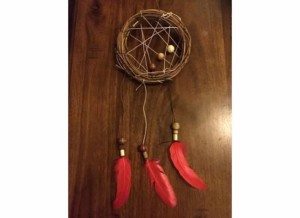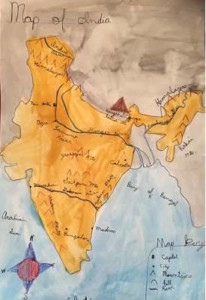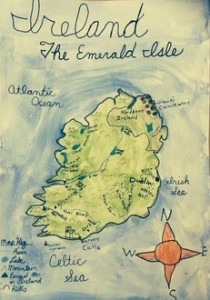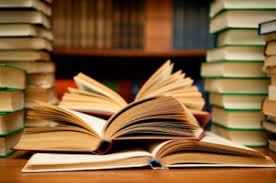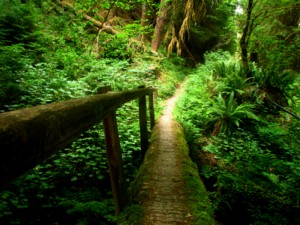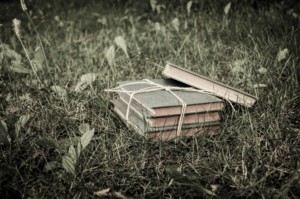England Country Study
The Books:
English Folk and Fairy Tales:
Robin Hood Tales:
(Any Robin Hood books will do)
King Arthur Tales:
Books about England:
An Introduction to Shakespeare:
Just in case the Amazon book links didn’t load on your computer, here is a written book list:
Tomb Thumb – Watson
The Old Woman Who Lived in a Vinegar Bottle – MacDonald
Jack and the Beanstalk – Cech
Princess Furball – Huck
Robin Hood and the Golden Arrow – San Souci
The Adventures of Robin Hood – Pyle
King Arthur: The Sword in the Stone – Talbott
The Tales of King Arthur: Excalibur – Talbott
Young Guinevere – San Souci
Stage Fright on a Summer’s Night (Magic Tree House) – Pope Osborne
A Ghost Tale for Christmas Time (Magic Tree House) Pope Osborne
Rags and Riches (Magic Tree House Fact Tracker) Pope Osborne
Knights and Castles (Magic Tree House Fact Tracker) Pope Osborne
A Midsummer Night’s Dream – Adaptation for young kids – Coville
Bard of Avon : The Story of William Shakespeare – Stanley
William Shakespeare and the Globe – Aliki
Introduction to England:
To introduce your children to England and its capitol city, London, watch the following video:
Top ten places to see in England:
Villages in the United Kingdom: To introduce your children to the charm of English villages, watch the following video and note the English villages, as this video includes Irish, Scottish, and Welsh villages.
To see more of the English Country, watch this video:
Before you work on your Stonehenge project with your children, share this video with them:
Mapping England:
Mapmaking is such an exciting project for children. Not only is your child learning the geography of England in a much more memorable way than fill in the blank maps, but she is learning a historic art form. I find that my children truly learn and retain their geography when they create their own maps, as they are having a visual, kinesthetic, and artistic experience while learning the geography of the region. Here is how we approached mapping England.
Materials: A cutout of Great Britain for your child to trace, (I made ours by tracing a map and cutting it out) a piece of watercolor paper, watercolors, waterproof India ink pen, colored pencils, and an atlas or computer.
Day 1:
1. Look at a map of The United Kingdom. If you completed our Ireland block study, then ask your children to find Ireland on the map. Then bring their attention to the large island east of Ireland. Tell them that the Island is called Great Britain. Then explain that we call Great Britain and Northern Ireland The United Kingdom.
2. Have them point to and name all the countries in The United Kingdom; Scotland, England, Wales, and then remind them that Northern Ireland is a part of The United Kingdom.
3. Give your child a large (11 x 14) piece of watercolor paper and the cut-out you have prepared of The United Kingdom. (Actually just of Great Britain- we will sketch in Northern Ireland)
4. Have your child hold the cut-out on his watercolor paper and carefully trace around it with a pencil.
5. Then have your child use an india ink black pen to trace the outline. (It is waterproof) Erase the pencil marks
6. Now notice the borders on the map between the countries. Have your child draw in the borders.
7. To the west, sketch in Northern Ireland and use india ink to make it permanent.
8. Label your map “The United Kingdom”
9. Label all the countries as well as Northern Ireland
10. Watercolor each country a different color and watercolor the oceans blue.
Day 2: Oceans, Seas, and Rivers of England
1. On your atlas, locate the Atlantic Ocean, the North Sea, and The Irish Sea and have your child label them on her map.
2. Explain what a channel is and find St. George’s Channel and the English Channel and label them.
3. Explain what a Strait is, then find the Strait of Dover and label it.
4. Label the main rivers in England: If your atlas doesn’t have a clear river map of England, use this link and this link to find the most significant rivers. There are so many rivers in England, so don’t feel you have to label all of them.
Day 3: Mountains and Hills of England
1. Using this link to label the major mountain ranges and hills of England. Use little upside down Vs to symbolize mountains and small arches to symbolize hills.
Day 4: Major Cities of England
Use this link to label a few major cities in England. (London, Birmingham, Leeds, Sheffield, Liverpool, Manchester, Bristol, Nottingham.) You don’t have to label all major cities.
Day 5: Interesting Places
1. Find your favorite places from the first video on the map and label them with a little drawn icon.
2. Label Stonehenge after watching the video about Stonehenge. Add a little drawn icon.
3. After reading Robin Hood, draw a little green Robin Hood hat next to Nottingham.
Day 6:
1. Make a map key
2. Make a compass rose
Wildlife Map of England:
Learning about the wildlife of the country you are studying is equally important to learning about the geography and cultures, as hopefully we are raising a generation that will contribute to the well being of our planet, the protection of species, and the preservation of wildlife. There is no better way to contribute to that goal than to nurture in our children, from a young age, a respect and admiration for nature and wild life.
Materials- a cutout of England (same cutout used for the first map), a large piece of thick paper, (we always use watercolor paper so that these projects last), colored pencils, india ink pen, and either block crayons or watercolors.)
1. Have your child make an outline of England on his page. (You can use the cutout you made for the previous map and just center it so that England is centered.
2. Outline England in a dark colored pencil. (We used dark green for England and outlined the rest of the island in brown to emphasize England.)
3. Click on this link to learn about some of the animals common or native in England. Have your child pick her favorite animals and draw pictures of them on her map and label them. (If your child doesn’t enjoy drawing you can print pictures of the animals and have her cut them out and glue them on her map.)
4. Click on this link to learn about the marine mammals that live in the waters around England. Have your child draw her favorites in the waters on her map and label them.
6. Click on this link to look at pictures of the native wildflowers in England. Have your child pick her favorites and draw them on her map and label them.
The Flag of the United Kingdom: England’s, Scotland’s, and Northern Ireland’s Flag All in One
Click on this link to learn about the flag of England. As the flag of the United Kingdom is most common in England, click on this link to learn about the meaning of the flag of the United Kingdom, and how it combines the flags of England, Scotland, and Northern Ireland.
Make a U.K. Flag:
1. On a large piece of paper, draw three rectangles across the top of the page and one large rectangle on the bottom of the page.
2. In the first rectangle, have your child color the flag of England with markers.
3. In the second rectangle, have your child color the flag of Scotland.
4. In the third rectangle, have your child color the flag of Northern Ireland.
5. Show your child how the United Kingdom combines all those flags and help her color the United Kingdom flag in the bottom rectangle (For some reason the flag of Whales is not included).
6. Label your flags.
Stonehenge Project:
Materials: Air dry crayola clay, bowl of sand, piece of wood or cardboard, green paint, glue
Before you begin this project, watch the video about Stonehenge at the top of this page.
1. Paint your board green to look like grass
2. Form the blocks of stone with the clay and roll them in the sand to look more like old stone. Then set the blocks up in a ring on the board. For every 2 stones, have one slab rest across the top.
3. Make a complete ring and a few monoliths in the circle.
4. When everything is dry, add a bit of glue here and there to make it steady.
Note: The upright stones are called liths. A single upright stone is called a monolith. Two upright stones with one laid across the top is called a trilithon.
Robin Hood Projects:
Robin Hood Hat:
Materials required: Green felt, thread, scissors, a feather
To make the Robin Hood hat click here and follow the instructions.
Robin Hood Bows and Arrows:
Materials: 1 long stick and 2 short ones, string, felt, and felt glue
To make these exciting and safe bows and arrows, simply tie the string tight on each side of the long stick. Make sure it is tight enough to curve the stick. Then cut out little felt arrowheads and glue them on the tips of the short sticks.
King Arthur Projects:
Make Your Own Shield and Coat of Arms:
Materials: cardboard, construction paper, paint, glue, scissors, pencil
To make your own shield and coat of arms:
1.Have your children pick an animal, mythical creature, or symbol that they feel represents them, strength, or something they identify with or love.
2. On construction paper, have them draw a picture of it, as a silhouette, and cut it out.
3. Using cardboard, cut out a large (or small) shield
4. Have your child paint the shield their favorite color.
5. When the paint is dry, glue on the cutout.
6. Cut out two strips of heavy paper and glue the ends together to make a circle. Glue 2 of these on the back of your shield for your child to slip her arm into.
Make Excalibur (King Arthur’s Sword):
This project can be done with any materials. Your children can draw a picture, or make a cardboard cut out, or any other idea you might have.
We chose to cut out a large piece of cardboard and paint the sword grey and handle gold. Then my children collected little treasures from around the house, such as stones and crystals, and they glued them on. When they finished the sword, they pretended to pull it from the stone.
Preparing a Traditional English Afternoon Tea:
Enjoy the comforts of a traditional afternoon tea with your children!
Begin by teaching your children to set the table beautifully, and with care, if possible, using a table cloth, plates, and tea cups. If you don’t have traditional tea cups, any mugs will suffice. This is mostly about teaching your children to set a table with care and attention to detail.
Then make your afternoon tea food selection. Traditional foods include tea sandwiches, which are tiny sandwiches with the crust cut off, (Cucumber and cream cheese or watercress sandwiches are very traditional) scones with clotted cream and jam, crumpets, small cookies and other little treats. Tea is traditionally served with cream and sugar. (For the kids’ tea we use rooibos, as it is red and looks similar to black tea.)
Click here for traditional tea sandwich recipes. Click here for a recipe for crumpets.
Click here for a variety of Afternoon English Tea recipes.
Make Your Own Royal Guard:
Buckingham Palace, in London, is where the current Queen of England resides. Watch the two videos above and then make your own Royal Guards.
To learn more about Buckingham Palace, click here.
Materials: Old fashioned clothes pins, red and black markets or paint, white paint, and black wool roving or cloth for the hat.
Color or paint the pants black and the shirt red- leave space for the white belt. Then paint the white belt. Draw a face. Then glue on the black wool roving or a furry piece of cloth to make the hat. Draw on buttons.
Cooking Cornish Pasties:
We had so much fun making Cornish Pasties, a traditional British food. They came out absolutely delicious, and now have become a part of our regular dinners, by request of my children.
They are quite easy to make and if you don’t feel up to making your own pie crust, you can use a pre-made crust and simply roll it into a ball and re-roll it out so that it is a bit thicker than the original. If you are up to making your own pie crust, it is quite fun and simple.
We made one alteration to the recipe. My daughter browned the meat rather than putting it into the pasty raw, to be baked, just to make sure that it would be tender.
For a traditional Cornish pasty recipe, click here.
Enjoy!
Old English Folk Songs:
Click on the following song or dance titles to view:
Greensleeves
The Bold Grenadier
English Lute Music
The Morris English Folk Dance
English Dance- Historical reenactment
England’s Main Religion:
The main religion of England is the Anglican Church of England, which is a denomination of Christianity.
To read more about the Anglican Church as well as other minority religions in England click here.
Featured Country Studies
Featured Blog Posts
What This Site Offers and Will Offer:
HOME COUNTRY STUDIES:
On our Country Study Pages you will find month long, complete geography and culture curriculums for selected countries. For each individual country study, you will find a booklist, an introduction to the country and the beauty of the region, mapmaking projects, projects based on traditional folktales, projects based on the traditional clothing of the region, recipes for cooking traditional meals, art projects, links to become familiar with the traditional music and dance of that country, and more.
NATURE STUDY:
By clicking on our “Explore Nature” tab you will find an ever growing wealth of resources to help you make nature study a wonderful and intrinsic part of your homeschool. From wildlife sketching video tutorials from John Muir Laws, to activities to get your children out and excited about nature, to wonderful products to help you educate your children about natural history. This section of our site will be replete with ideas to help you educate your children about nature, as well as give them the opportunity to create a life long bond with nature.
BLOG:
Please keep up with our blog! Topics will range from all things homeschooling, to topics of interest to mothers and family life, as well as much more!
COMING SOON!!
EXPLORE LITERATURE
Very soon I will have an “Explore Literature” tab on the menu. This section of the site will include booklists for various ages, as well as wonderful literature for mothers. Literature and reading are cornerstones of our homeschooling, as well as my life personally, and I hope to share with you the titles that have brought wonder, joy, empathy, ethics, and adventure into our lives.
COMING SOON!!
TRAVEL ADVENTURE PAGES
Next year I will begin creating travel adventure pages. These pages will offer full educational travel itineraries for various countries to help you create the educational trip of a lifetime. In each region, accommodations, historic sites, museums, historic re-enactments, cultural activities, and nature sites will be highlighted. There is nothing that compares to real life learning, and traveling is an amazing way to experience that.

